Why you need a jack plane
From flattening to smoothing, the No. 5 jack plane can do it all.
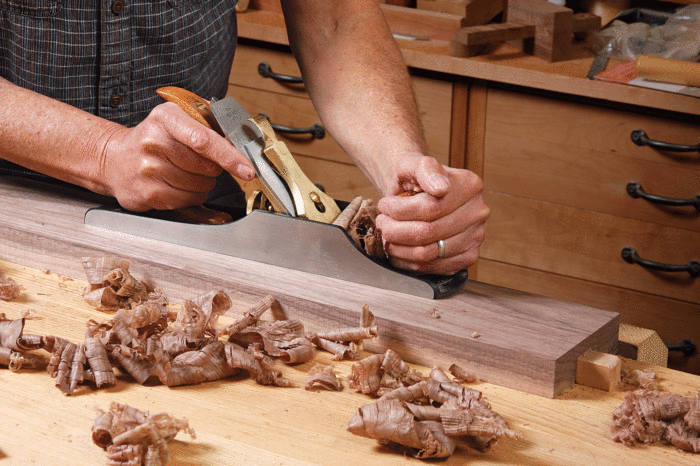
Jack planes are the workhorses of the shop and the go-to tool for a variety of woodworking tasks. The jack plane handles smoothing as well as the shorter No. 2, 3, or 4. It also can be used for the flattening and straightening tasks often reserved for the longer planes: the No. 6, 7, or 8. As its name suggests, this plane is a jack of all trades. Ideally, a jack plane should be capable of taking very fine shavings and leaving a great finish, and yet be able to remove lots of wood in a hurry when set for a deeper cut. It should also be adept at jointing edges prior to gluing up a panel.
One plane, many talentsA jack plane set up for a fine cut is a perfect smoother for most projects (below). With a few adjustments, the plane can transition to heavy cuts, flattening rough surfaces—even a workbench (below right). Its added length over the No. 4 makes it adept at jointing edges as well (right). |
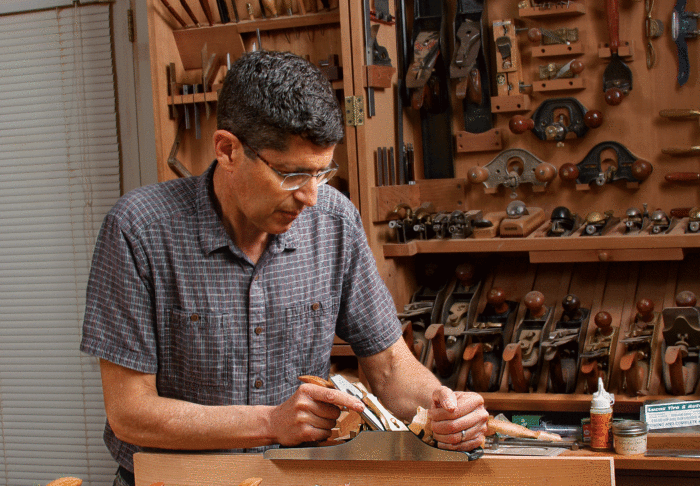 |
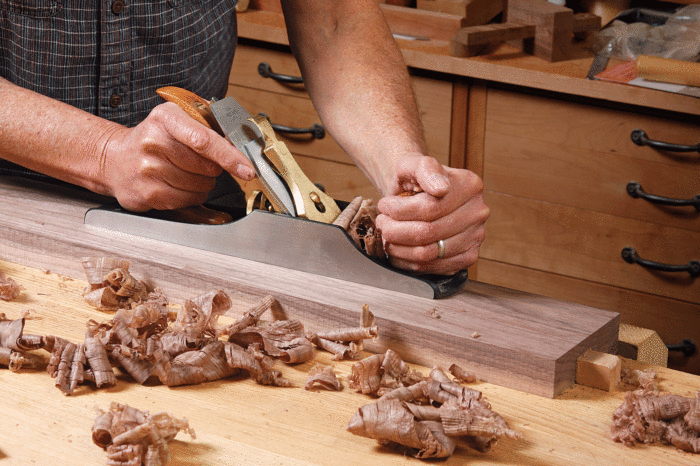 |
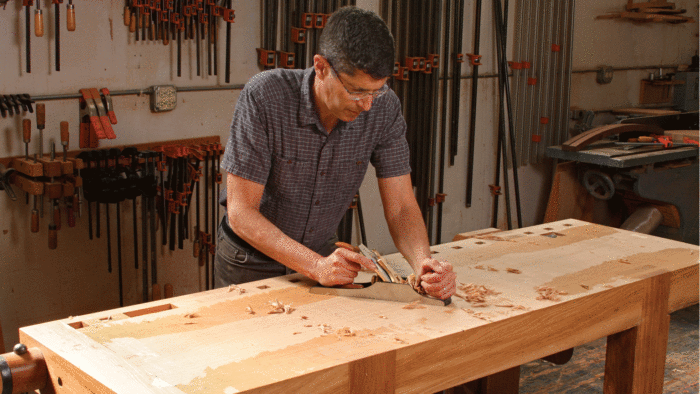 |
A close look at the critical parts
The sole of the plane must be flat, and the sides must be square to the sole, especially critical if you’re going to use the jack for shooting (it is well sized for this task).
All jack planes will need sharpening out of the box, a straightforward job. The chipbreakers must make solid contact with the plane iron. Without perfect contact, the blade will vibrate and chatter, and any gap can cause chips to clog the plane. The chipbreaker is either stamped or machined. The stamped type are thinner and generally need more attention to ensure they contact the back of the blade properly. Because they’re thin, they don’t dampen vibration at the tip of the blade as well as the thicker, machined chipbreakers. But even the machined chipbreakers will occasionally need fine-tuning to be sure that they seat well and that the machined contact face is smooth and flat.
| Planes with Bailey-type adjusters use a wheel to set the blade depth (top) and a lever for lateral changes (bottom). | 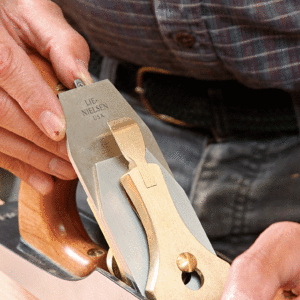 |
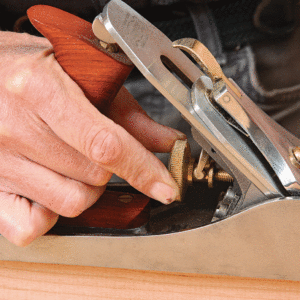 |
| Planes with Norris-type adjusters combine depth and lateral adjustment into one mechanism. Turning the knob changes the depth and swinging the lever makes lateral adjustments. |  |
An easy-to-use blade-adjustment mechanism—one that holds its settings—is incredibly important. Jack planes come with one of two types, the Bailey-style mechanism or the Norris-style adjuster. The choice is really one of personal preference. Do you want all the adjustment on one lever, or the depth and the angle adjustments separate? More importantly, can you reach the knob with your hands in place on the plane? You can probably get used to either type, but I prefer the Bailey-style controls.
You typically set the mouth opening tight to the blade for fine work and more open to keep the mouth from clogging when removing heavier shavings. The jack plane is one of the few planes where you’ll regularly use this adjustment, since it tends to be used for a wide range of tasks. You can adjust the mouth either by moving the frog (with the blade in place or out), or by sliding a toe, or shoe, at the front of the plane. Planes with a sliding toe let you keep the blade in place for mouth adjustments.
| You shouldn’t have to remove the blade to adjust the mouth. Mouth adjustments are made by moving the frog or by sliding a toe, or shoe, at the front of the plane. Planes with a Bedrock-style frog (or similar) let you move the frog with the blade in place by turning screws at the back of the frog (left). With planes that use a sliding toe to adjust the mouth opening (right), you never have to remove the blade for mouth adjustments. | 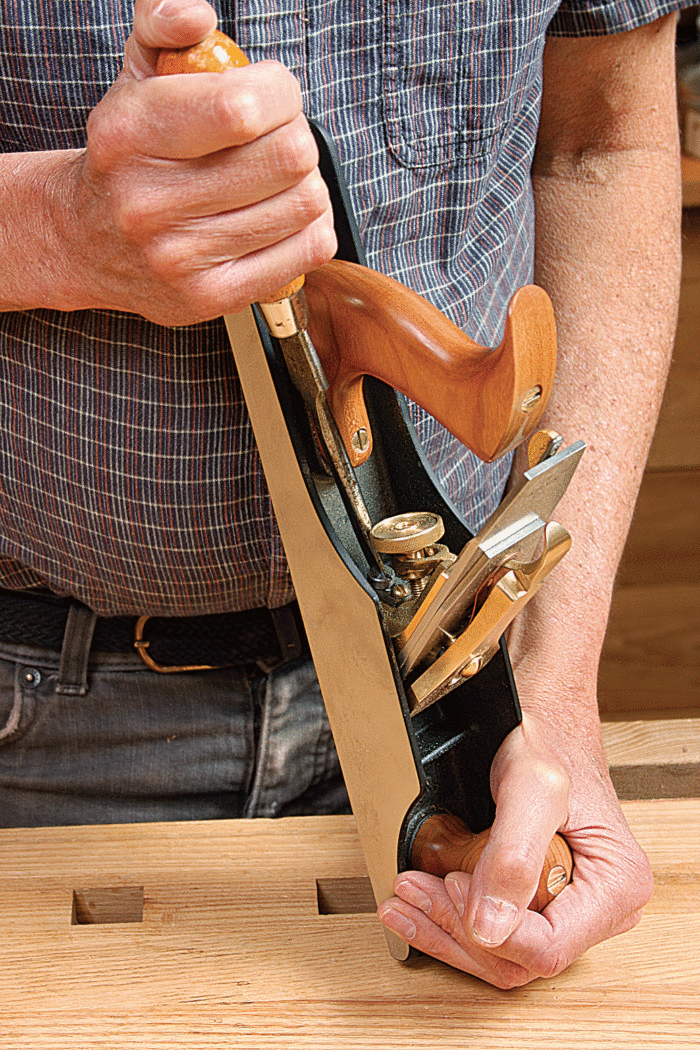 |
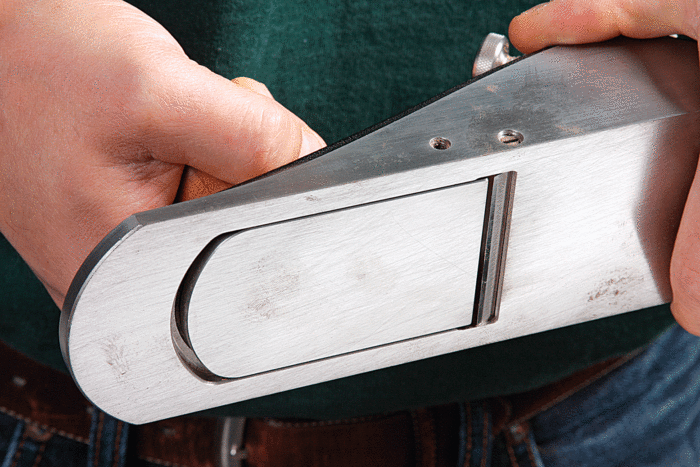 |
What about bevel-up planes?
In my view, the bevel-down jack planes are truly the grab-and-go tool for a multitude of shop tasks. But the bevel-up (low-angle) jack planes—originally designed to surface end grain—are versatile tools as well, especially considering that simply regrinding the bevel gives you the ability to have a low cutting angle for end grain or a high cutting angle for difficult grain.
See also:








Comments
I like my #5 Lie Nielsen but I take issue with the idea that it's an all in one plane. If you're doing long work, it's great for flattening and sometimes smoothing. On shorter pieces, like for boxes or drawers, it doesn't work for me. First off, I'm flattening mostly on my power planer. Secondly, it's just too long. I use the 4 for a first pass at smoothing but often wind up using a 3, especially if the grain is wonky and you have to come at it from various angles. I don't think "Use a 5 for everything" is good advice, sorry, although everyone has their own habits with planes.
Rob Cosman uses a 5 1/2 for all his drawers from flattening off the planer, to sizing, and to final finish. You can do it. Just need to practice.
As you do, I too love my #3, especially for really small work like jewelry box drawers.
Log in or create an account to post a comment.
Sign up Log in